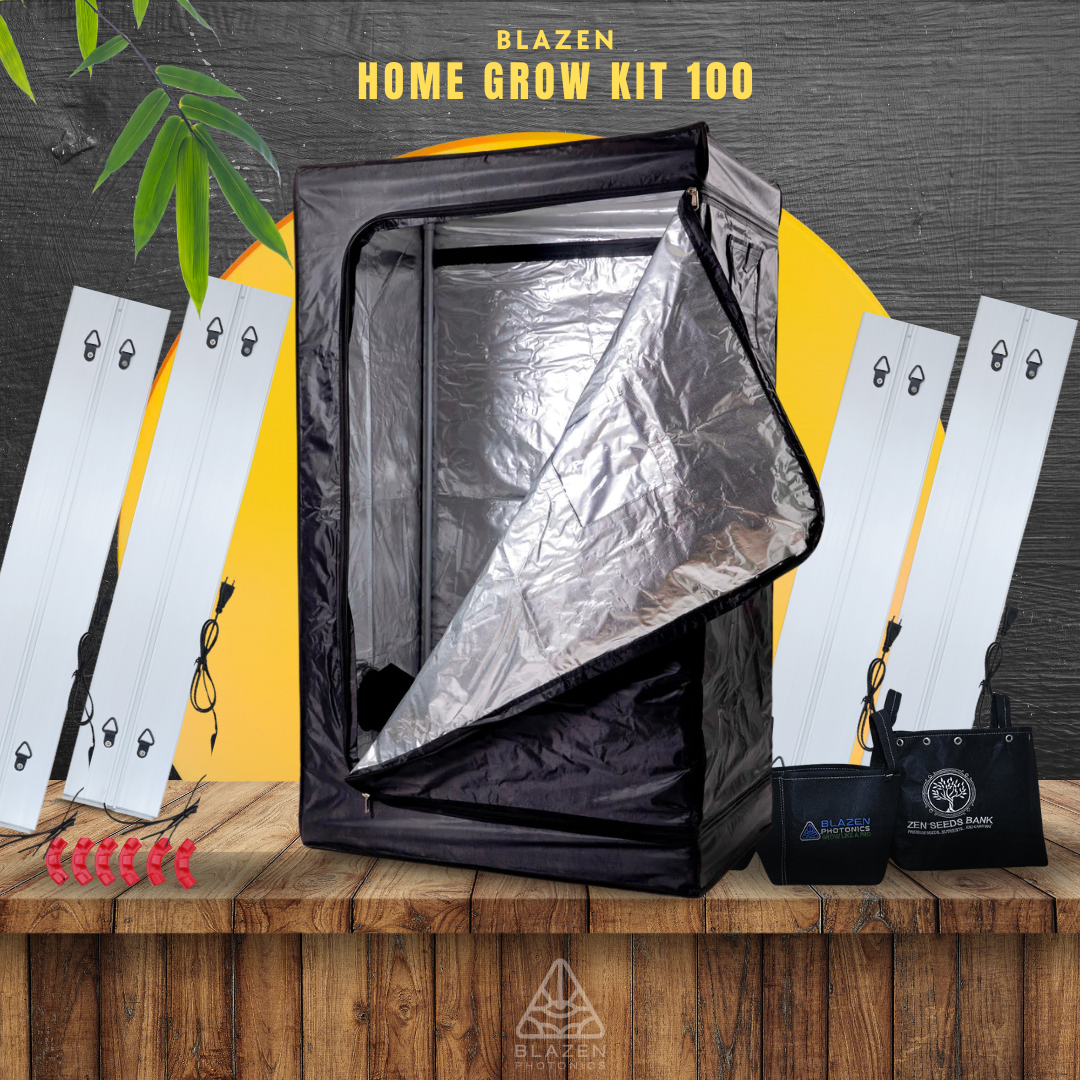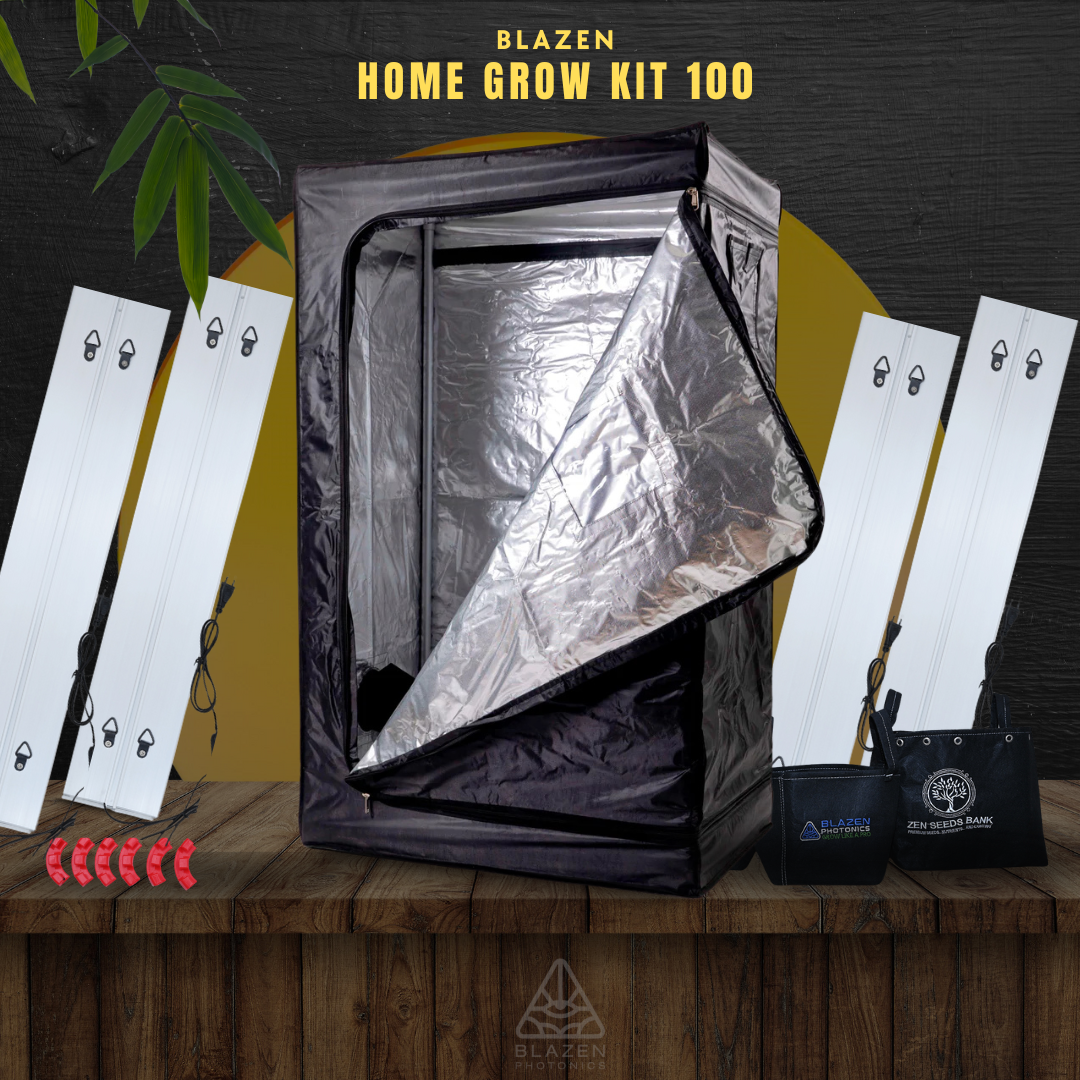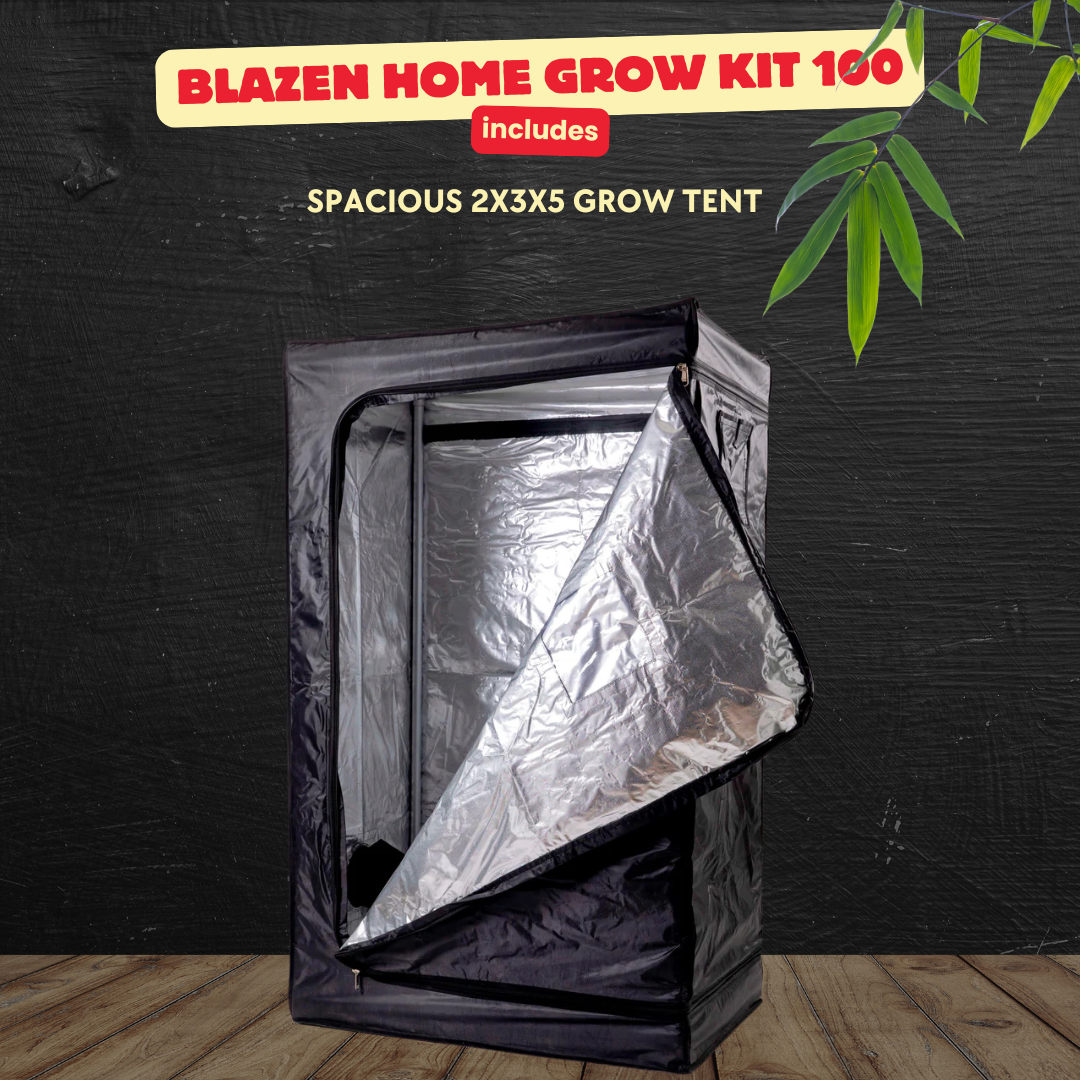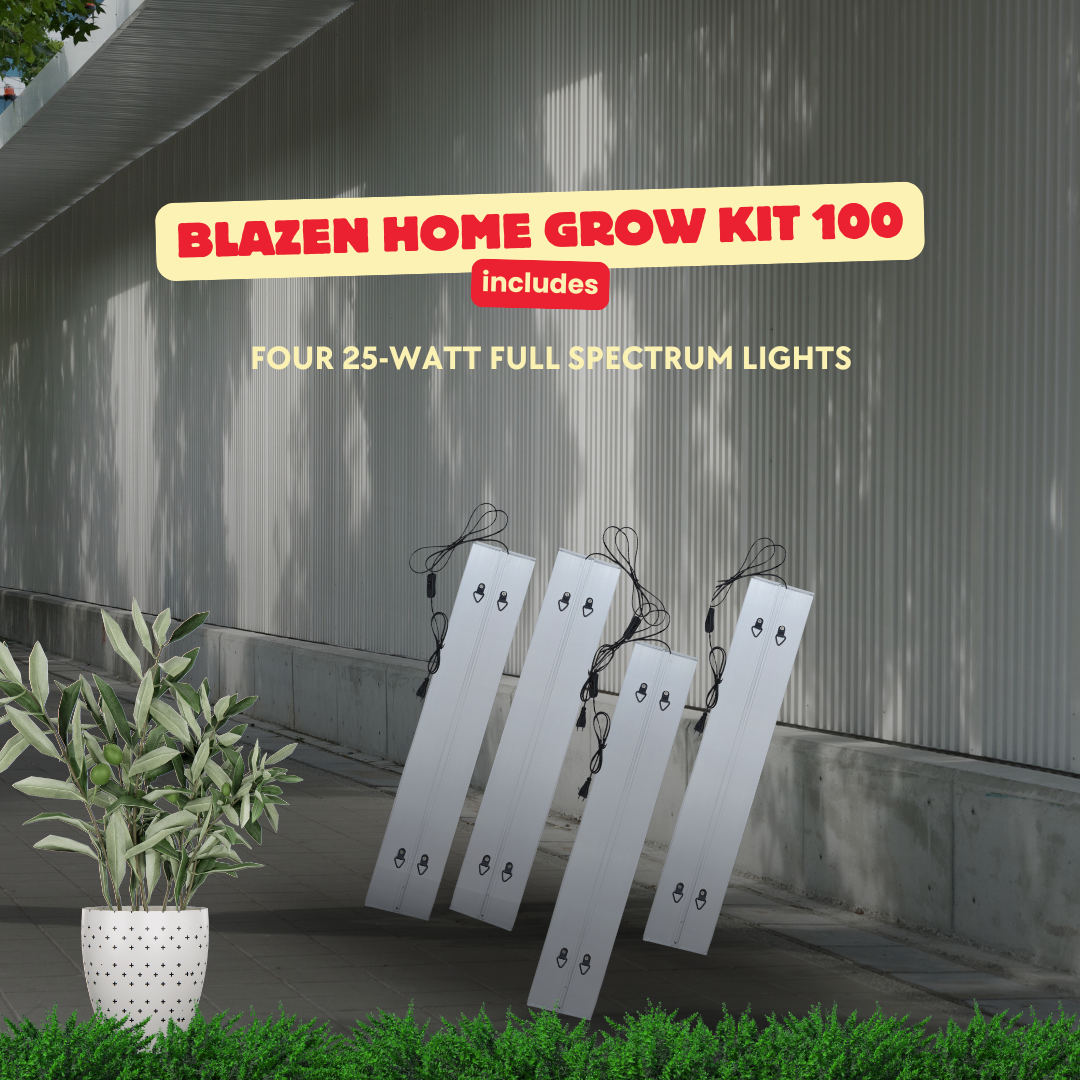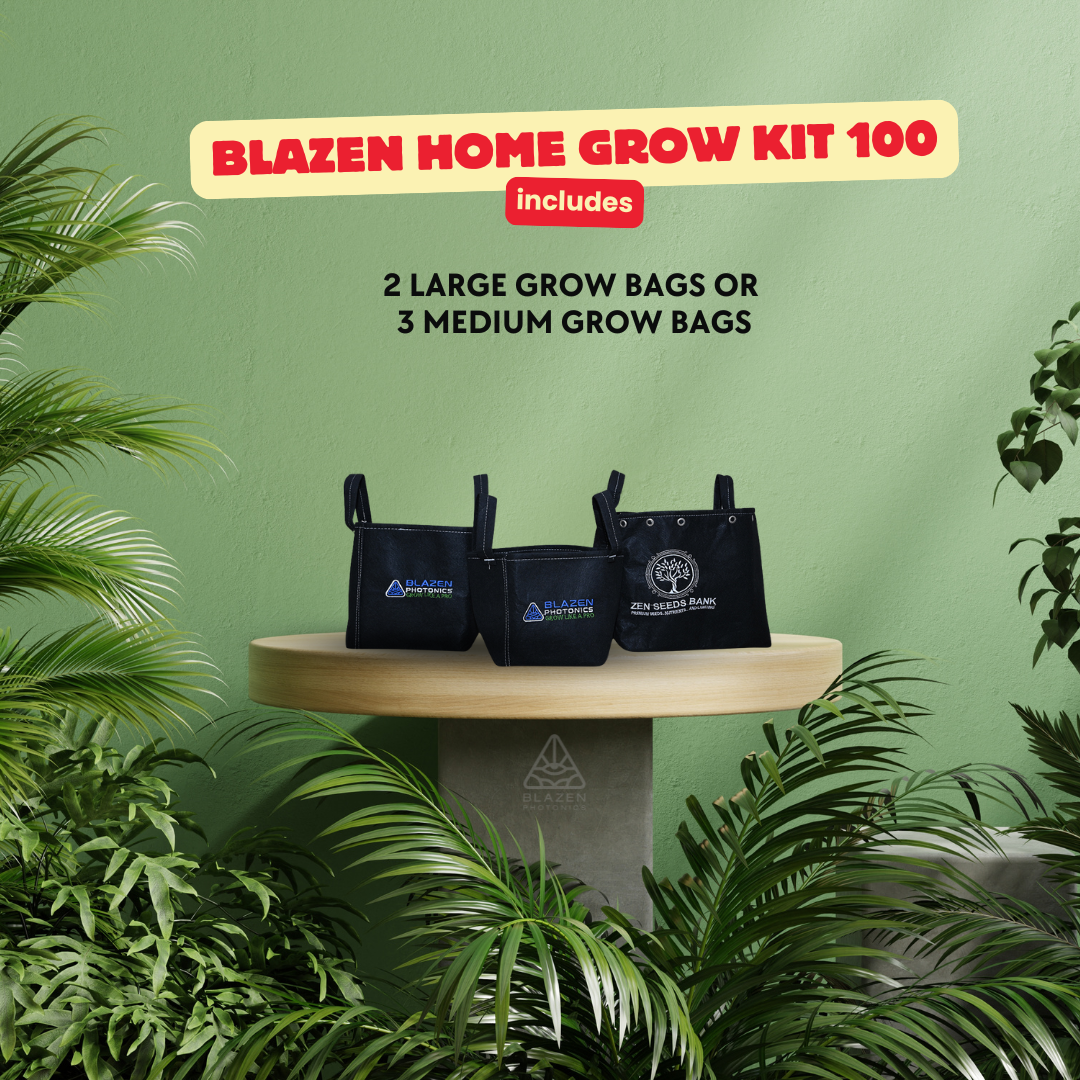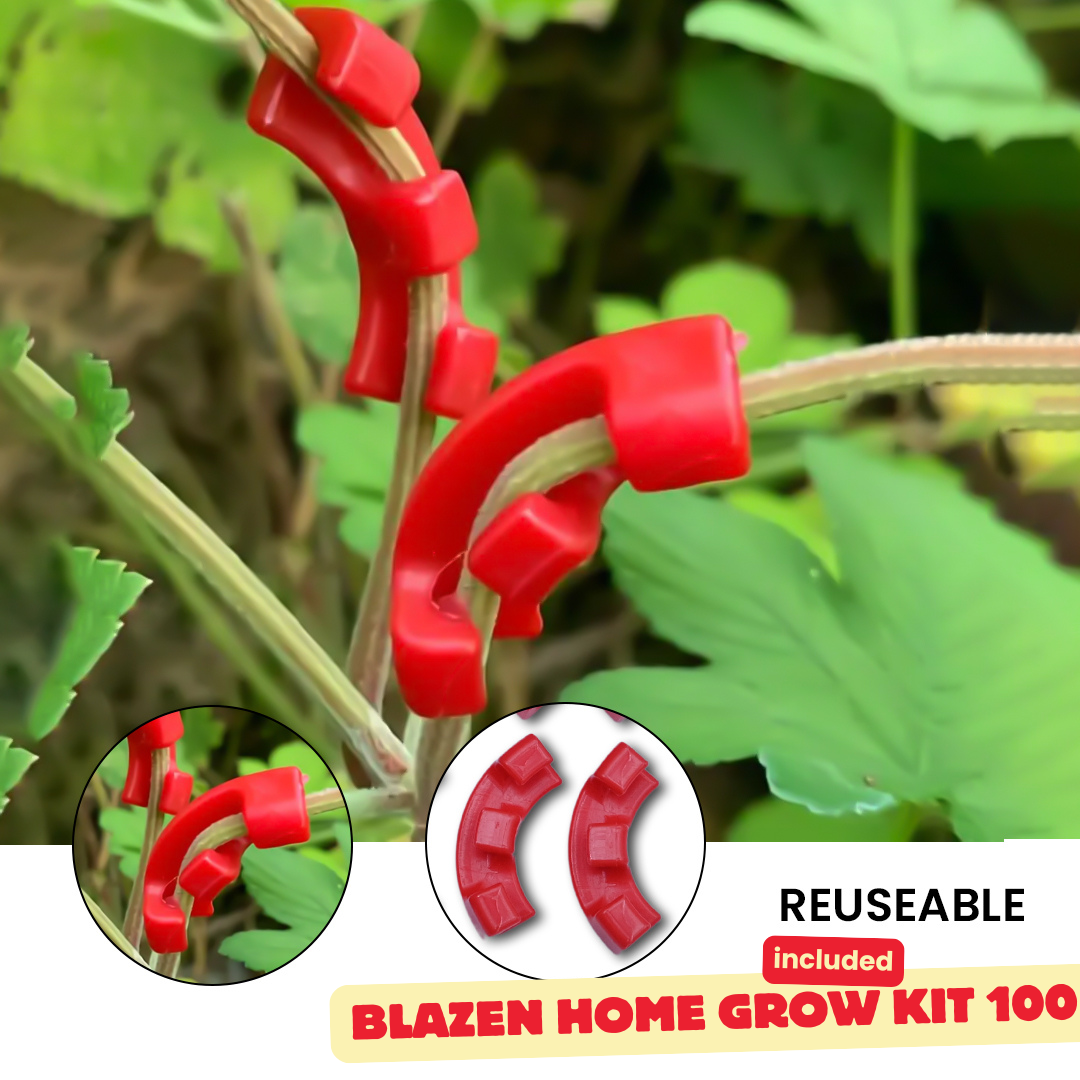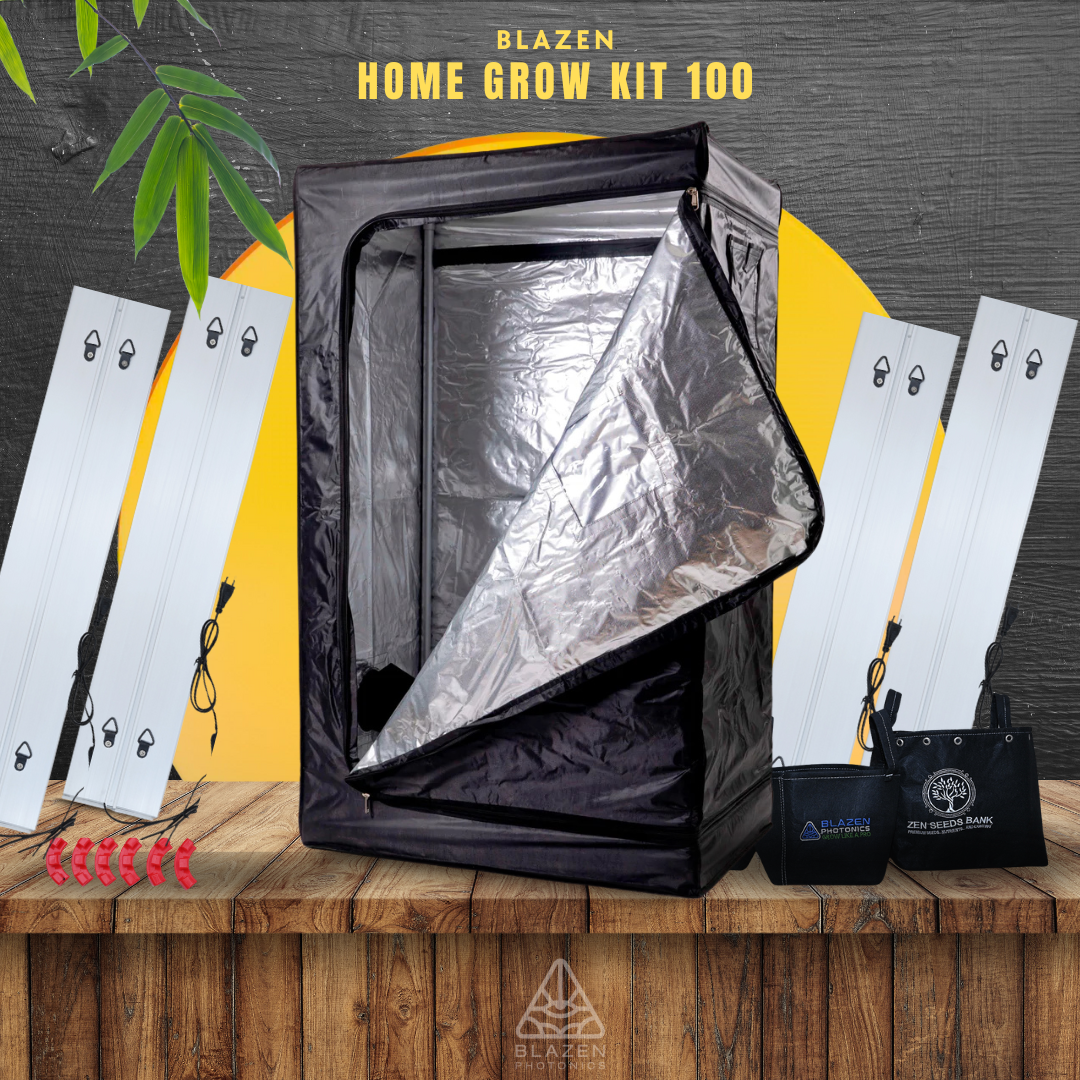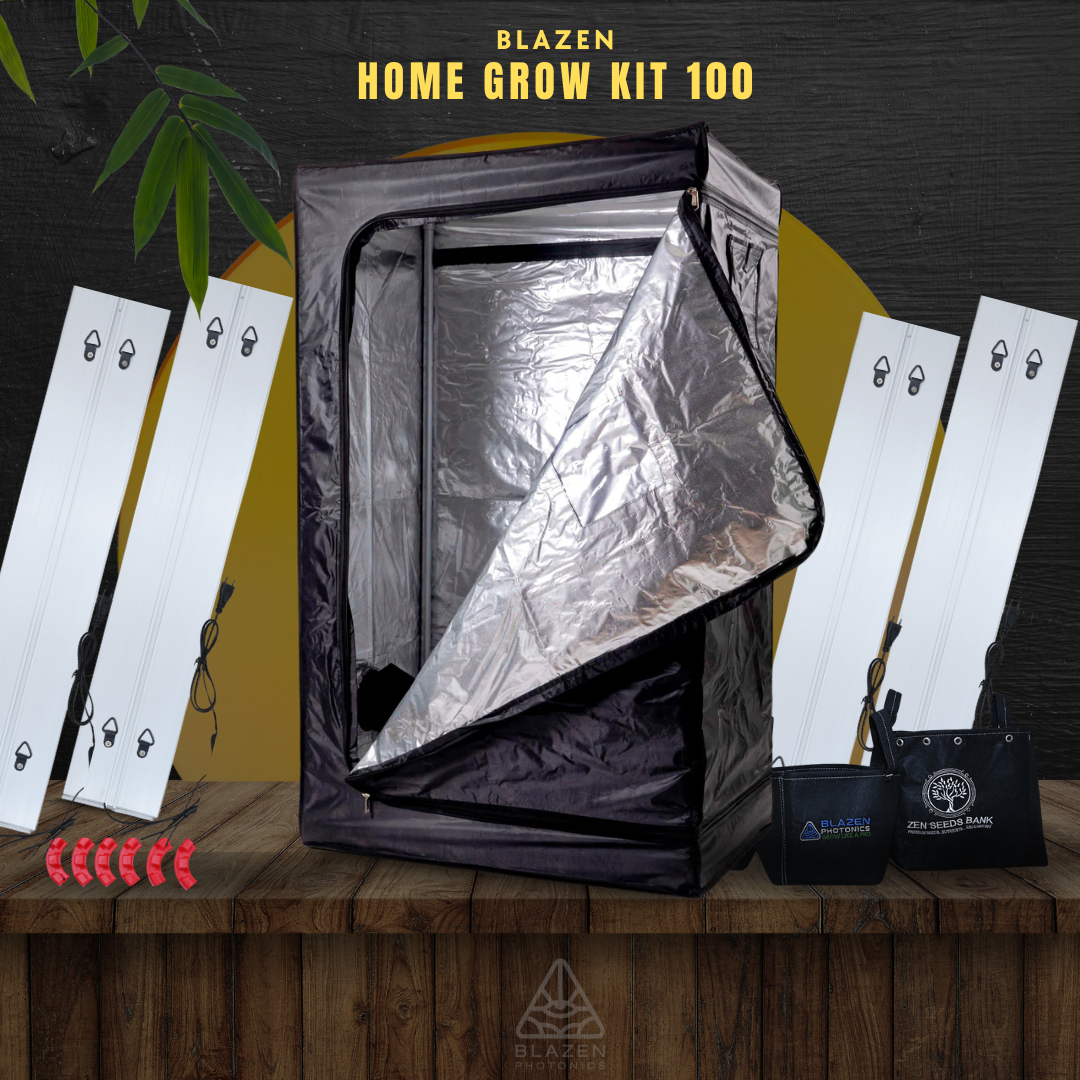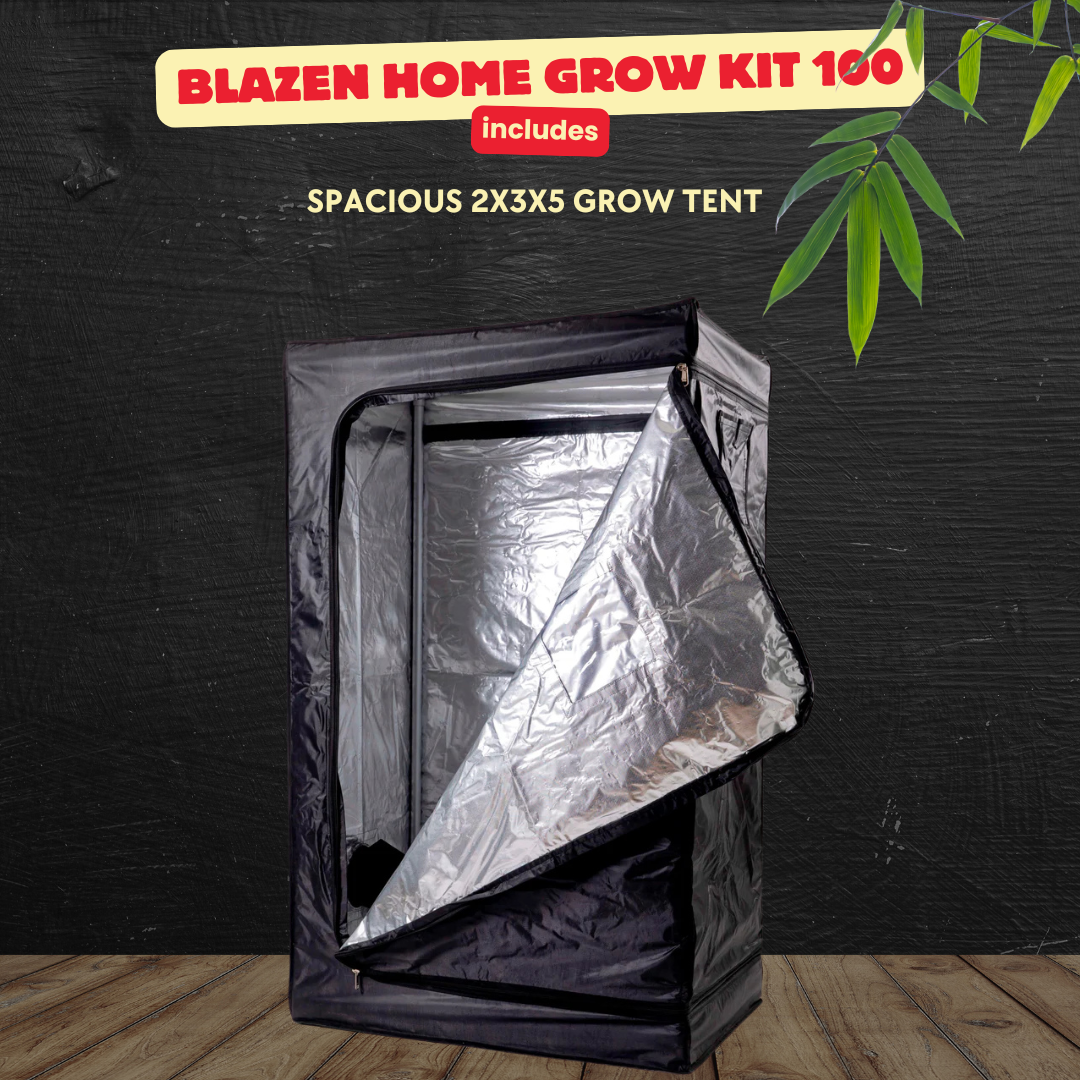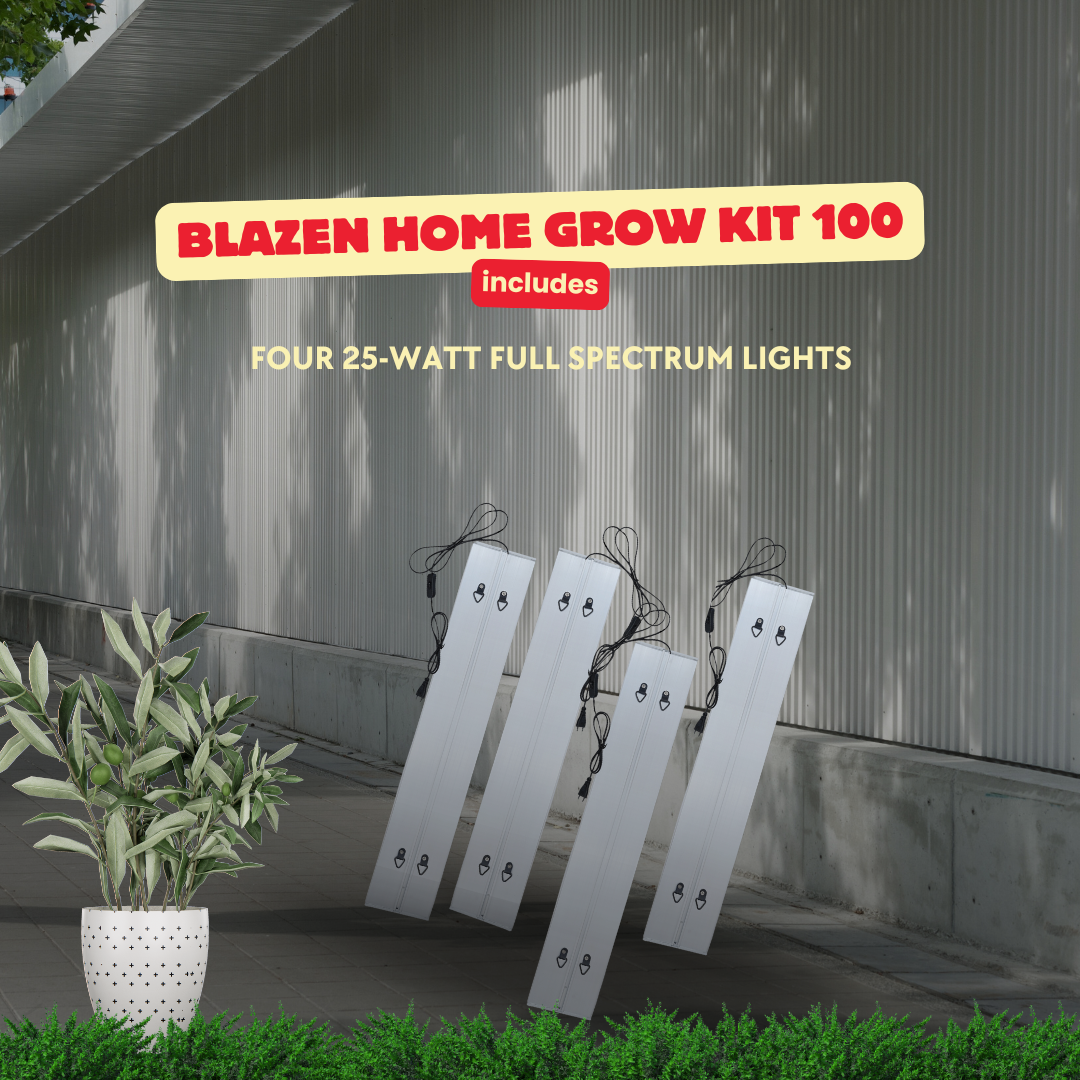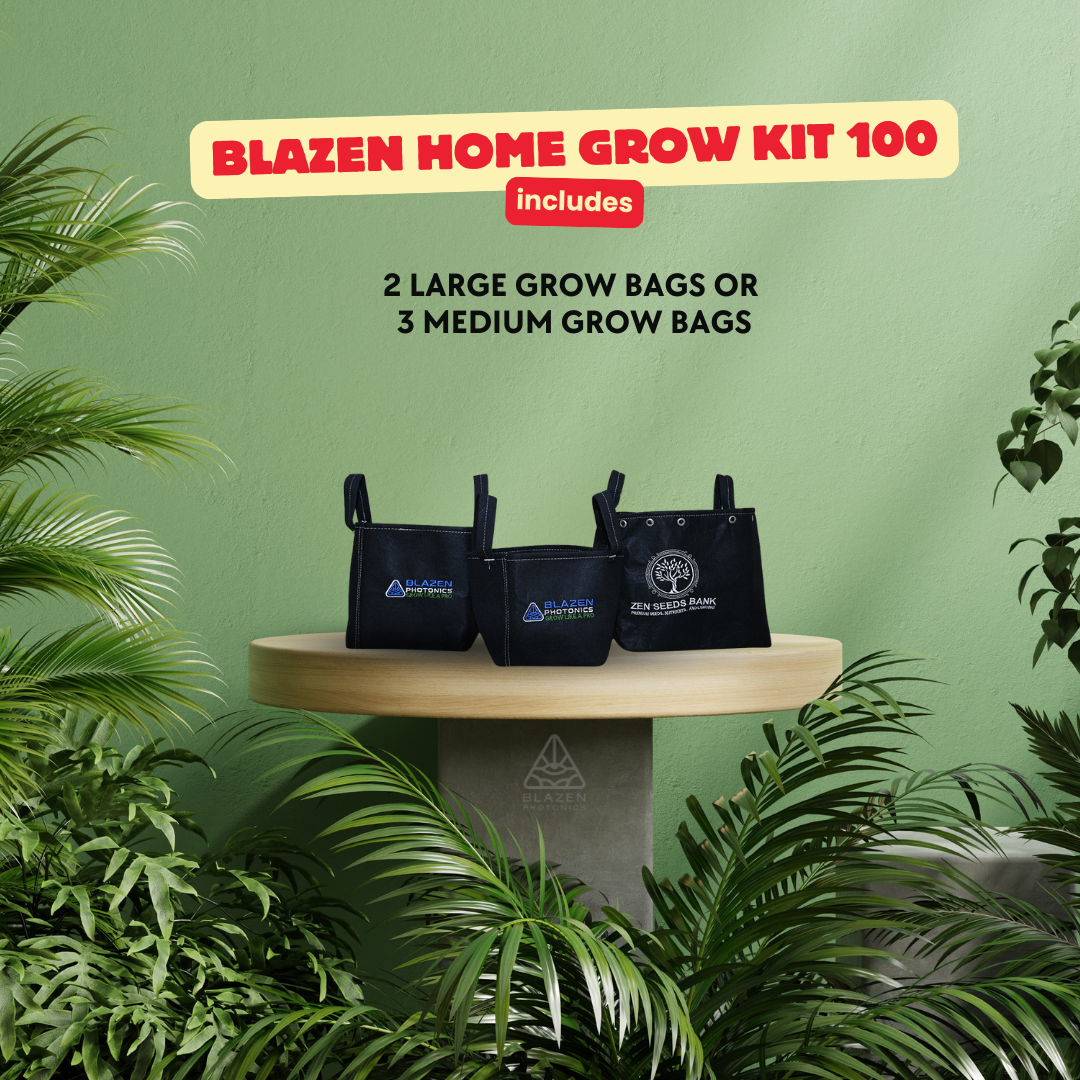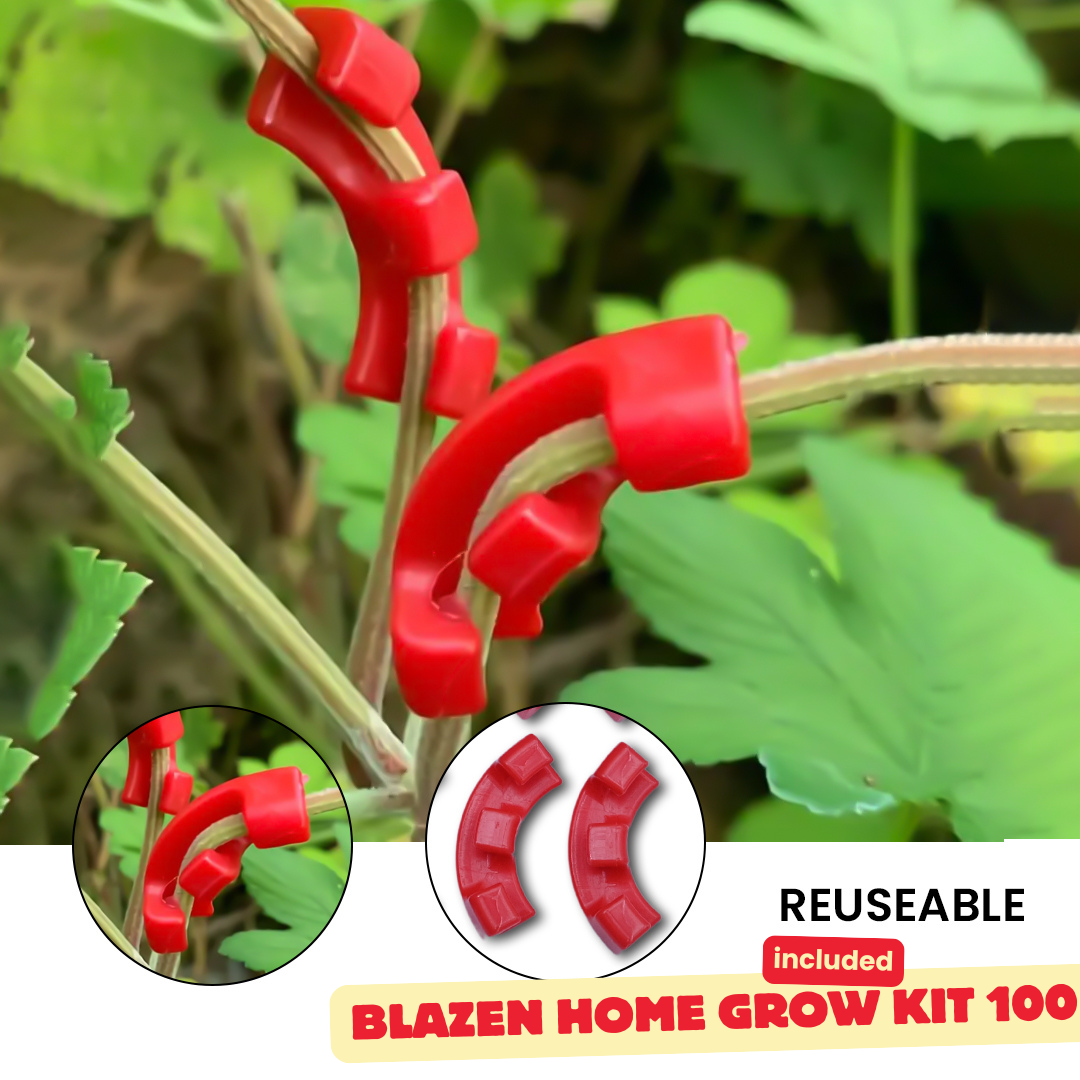My Store
Blazen Home Grow Kit 100 - Premium Indoor Gardening Solution
Blazen Home Grow Kit 100 - Premium Indoor Gardening Solution
Couldn't load pickup availability
The Blazen Home Grow Kit 100 by Blazen Photonics is your premium indoor gardening solution, delivering unmatched versatility and performance for growers of all skill levels. With an expanded grow area and powerful lighting system, this kit is perfect for cultivating a variety of plants, from lush vegetables to vibrant flowers, all from the comfort of your home.
Key Features:
- Spacious Grow Tent: The 2x3x6 feet grow tent provides ample space for multiple plants, ensuring optimal growth conditions.
- Enhanced Lighting: Comes equipped with four 25-watt full-spectrum LED lights, replicating natural sunlight to support every growth stage.
- Customizable Grow Bags: Choose between 2 large grow bags or 3 medium grow bags to suit your gardening needs.
- Advanced Plant Management Tools: Includes Low-Stress Training (LST) Clips and a Scrog Net for structured plant growth and maximized yields.
Primary Benefits:
- Efficient Indoor Gardening: Perfectly sized and equipped for home growers seeking to optimize space and energy efficiency.
- Full Spectrum Lighting: Delivers a balanced spectrum of light, promoting healthy photosynthesis for vibrant and productive plants.
- Customizable Setup: Flexible grow bag options and training tools allow you to tailor the kit to your specific plants and goals.
- Durable and Reliable Components: Built with high-quality materials for long-term use and consistent performance.
Specifications:
- Grow Tent: Sturdy 2x3x5 feet design for controlled growing environments.
- Grow Lights: Four 25-watt full-spectrum LEDs for balanced light distribution.
-
Grow Bags: Two large or three medium grow bags for versatile planting options.
- Accessories: Includes LST Clips and Scrog Net for advanced plant management.
How to Use:
-
Set Up the Tent: Assemble the durable 2x3x5 feet tent in a well-ventilated indoor area.
- Install the Grow Lights: Position the four 25-watt full-spectrum lights evenly inside the tent for comprehensive coverage.
-
Arrange Grow Bags: Select your preferred grow bags and fill them with the appropriate growing medium.
-
Utilize Accessories: Use LST Clips and the Scrog Net to manage plant structure and enhance light exposure.
- Monitor and Adjust: Regularly check on plant growth, adjusting light placement and accessories as needed.
Why Choose the Blazen Home Grow Kit 100?
The Blazen Home Grow Kit 100 offers the perfect balance of space, power, and convenience for indoor gardeners looking to expand their growing capabilities. From beginners to seasoned growers, this kit ensures you have everything you need to achieve thriving, bountiful plants year-round.
Elevate your gardening game with the Blazen Home Grow Kit 100—your gateway to lush, thriving indoor gardens.
| Components | Details |
| Grow Tent | 2x3x6 feet |
| Grow Lights | Four 25-watt full spectrum lights |
| Grow Bags | Option of 2 large grow bags or 3 medium grow bags |
| Accessories Included | Low Stress Training(LST) Clips, Scrog Net |
Share
